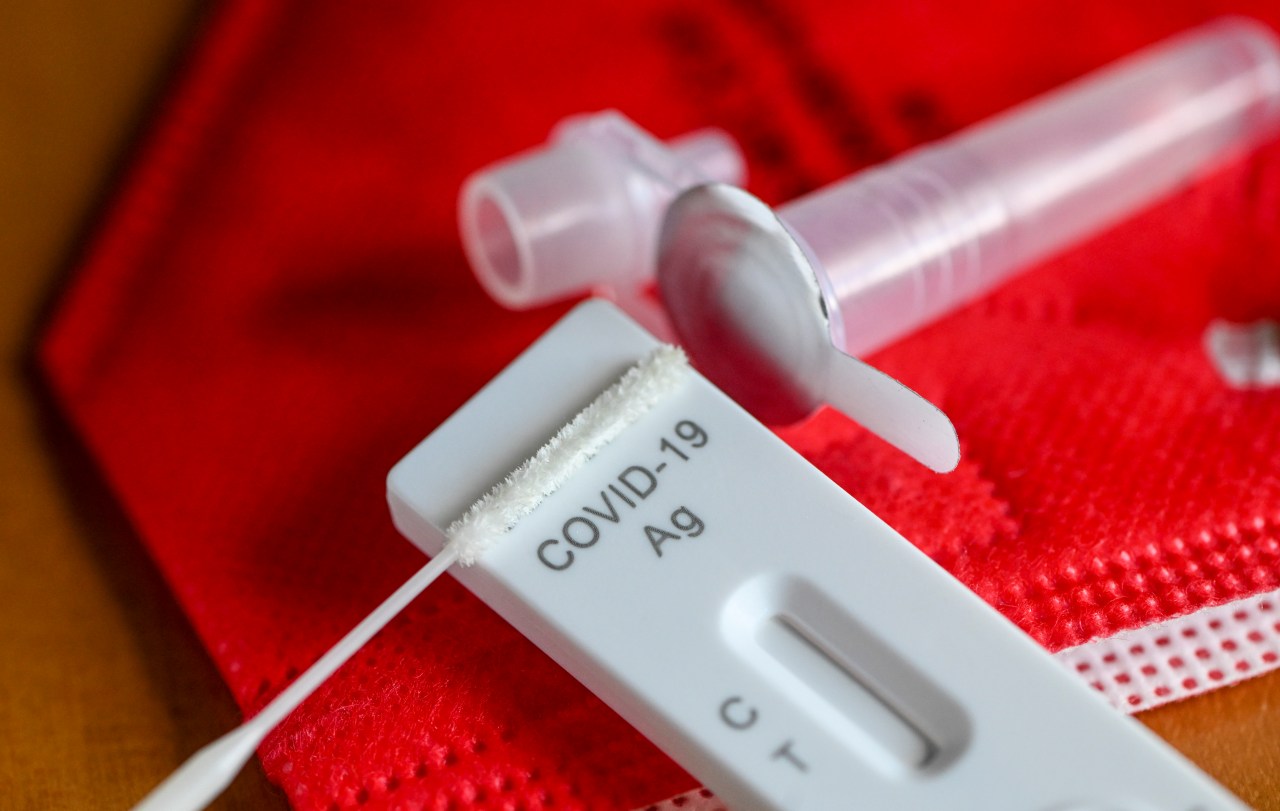
ILLUSTRATION – September 14, 2023, Berlin: An antigen test to detect Covid-19 for self-testing is on a red FFP-2 mask. Corona was no longer a major problem for a long time. Now the curve is rising again. Photo: Jens Kalaene/dpa (Photo by Jens Kalaene/picture alliance via Getty Images)
The number of coronavirus cases in California’s wastewater continues to rise, according to the latest data from the Centers for Disease Control and Prevention.
The Golden State is one of 21 states in this category, a notable increase from the seven states the previous week.
Other states with “very high” levels include Alaska, Colorado, Connecticut, Florida, Hawaii, Idaho, Louisiana, Maryland, Minnesota, Nevada, New Hampshire, New Mexico, North Carolina, Oregon, Texas, Utah, Vermont, Washington, West Virginia and Wyoming.
Washington, DC, also falls into that category.
Two new COVID variants, known as FLiRT, are responsible for more than half of the recent rise in cases.
In Los Angeles County, the nation’s largest county, coronavirus levels in wastewater have also increased.
The most recent data from the county health department shows that COVID levels in the county were 36% of last winter’s peak for the 10-day period ending July 17. That’s a significant increase from a data set ending July 10, when the county was just 27%.
The average number of daily cases also increased, from 307 for the week ending July 10 to 359 for the week ending July 17.
According to the CDC, COVID levels in wastewater nationally are considered “high” for the second week in a row. However, these numbers are subject to change as more data comes in.
Below is an overview of what you can do to protect yourself:
Vaccines
Doctors continue to advise people to get vaccinated, especially if they belong to a higher risk group.
In California, only 36% of seniors 65 and older have received the new vaccine, which first became available in September.
The U.S. Centers for Disease Control and Prevention has urged everyone 6 months and older to get one dose of the updated vaccine. A second dose is also recommended for people 65 and older, as long as it has been at least four months since their last shot, the LA Times reported.
To test
According to Scott Roberts, an infectious disease specialist at Yale Medicine, COVID tests should be able to detect the FLiRT strains.
Experts recommend that people who feel sick get tested daily. People should consider getting a rapid COVID test once a day for three to five consecutive days after experiencing symptoms. It’s important to note that it can take longer for a rapid COVID-19 test to return a positive result after the onset of illness.
What to do if you get sick
Health officials still advise people who test positive for COVID-19 to wear a mask, avoid contact with people at higher risk of becoming severely infected with COVID-19 and seek medical attention if necessary, according to updated guidelines published in January.
From January 9, people who have tested positive for COVID-19 but have mild symptoms and are fever-free without the help of medication may return to school or work after one day of isolation.
